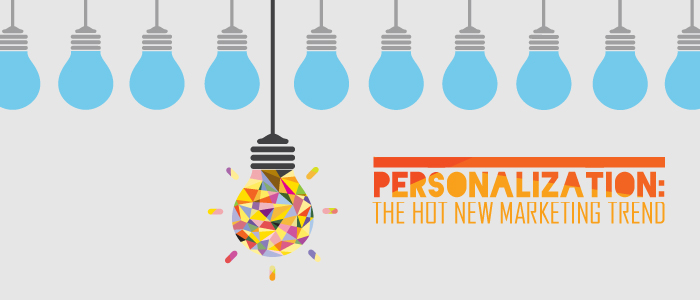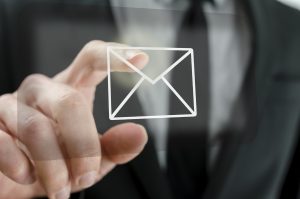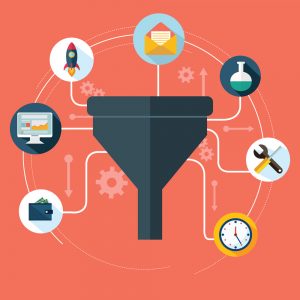Why A Seamless Customer Experience Is More Important Than Ever
The good old days of customers coming from one channel are over. This is due, in part, to the rapid rise of mobile and social as marketing platforms, and with them, came omni channel marketing. They have created a shifting power dynamic allowing customers to experience and interact with brands in ways they were not able to just ten years ago. This could be visiting a store in person, the website, the social media presence, and any combination of using a laptop, tablet, wearable or mobile device. Nevertheless, the imperative question remains: What is the customer experience like on each platform and how can your brand take advantage of it?

With multiple users coming from every channel, businesses need to shift their marketing strategies from a single channel approach to an omni channel approach and be able to accommodate as many people as possible.
Omni channel, as its name states, is a multichannel approach to the sales process, and its primary goal is to bring a seamless shopping experience to the user. The term “shopping experience” relates to mobile shopping, desktop, by telephone, or even in bricks and mortar stores.
Rather than telling customers where to go, you are meeting on their terms where they like to purchase. Not everyone has time to visit a store in person or is tech savvy enough to follow your twitter feed. A successful modern brand needs to be everywhere at once and deliver a consistent experience across the board.
That, however, is much easier said than done.
To successfully carry out an omni channel strategy, you need to know as much about each customer as possible. Luckily, there are more and more data points available to corporate marketers allowing them to make informed decisions. Having a consistent experience is great, but at the end of the day it needs to translate into increased sales, and working with an experienced team can mean that your business can see ROI results in days, not years.
Omni Channels – Everywhere At Once

It has always been important to know as much as possible about your customers, and it is even more important now. Whereas in the past you could rely on a survey or questionnaire done in a store about what customers thought, these days not as many people want or need to go into brick and mortar store. In fact, 71% of shoppers believe that they’ll get a better deal online, so why get up to drive to a store when a better price is available from the comfort of the couch. To compete in today’s market, businesses need to have some form of digital presence.
Why Consistency Is The New Black
A modern brand can be thought of like a mosaic, with each tile representing a different channel. If customers are told one thing from one channel, it is safe to assume they should be told the same from another.
As a marketer, it is imperative to keep your messaging consistent while adapting to the speed of digital society. People’s habits are changing faster than ever, and we need to understand where users are and consistently provide value for them no matter what channel. This will help cement a solid brand and a strong customer experience.
Channel Specific Customer Experience
Here is all you need to know: Customers act differently in each channel, and your brand needs to act differently as well.
Here is a quick rundown of general trends for each platform:
Mobile: It is not a question; it is not a fad; it is here to stay. Mobile is a legitimate platform, and you cannot overlook its importance. This is clearly displayed with this past year’s Black Friday/Cyber Monday sales, where mobile accounted for 49% of all visits.
An important thing to note is that while 49% of visits were mobile, only 35.3% of purchases were made on mobile. One-third is still a huge number, but on days other than Black Friday, mobile users prefer to browse rather than purchase. Make sure your content is mobile optimized to look great on any device.
Mobile Trends Summary
– Users are mostly browsing, rather than purchasing
– Customers do quick site visits while on the go
– Tend to have high bounce rate for sites that aren’t mobile-friendly
Laptop + Tablet: Buying something online on your computer is pretty commonplace these days, with even technically challenged baby boomers taking advantage of it. Brands know how important it is to have a smooth checkout process with close to 60% of online sales coming from laptops and tablets.
There are numerous challenges moving forward with an omni channel integration strategy with regards to the laptop and tablet segment. Some key tactics to keep in mind include serving location specific content which changes based on the customer’s location, equipping sales associates to help customers checkout anywhere, and integrating in store tools like QR codes, sensors or beacons to engage with customers.
Laptop + Tablet Trends Summary
– This is where most of the shopping experience happens
– Users will browse multiple sites/stores
– Slow loading will increase bounce rate
Brick And Mortar: They are still the hallmark for many stores, but looking at industry trends, in-store sales have dropped by 10% over the last year. This does not mean that brick and mortar stores are dead, but it is a sign that retailers should start thinking about how to adapt moving forward.
The in-store experience is unique and gives marketers many options for how they want to interact with the customers. The problem is, most brands do not carry their online messaging over into the store. Sure, the logos and colors are still the same, but does the customer have the same experience? Smart brands are doing more than just asking for an email address on checkout. They are offering legitimately good deals if customers visit their website, and letting them order online and pickup in store.
Brick And Mortar Trends Summary
– Large percentage of purchasing still done in-store
– Customers may be browsing but will usually do so online and consequently buy in store
– Brings an excellent opportunity to connect with customers
Social: Social media has quickly become a channel all marketers should have on their radar. Each social channel has it’s own type of content. It’s important to understand that traditional ads are not working like they use to, and now smart marketers are adapting to provide useful, shareable, and valuable content to people. Whether it comes in the form of videos, coupons, emails, or tweets, the messages must include compelling content for communication to resonate with the client.
Social Trends Summary
-Your content must be educational or entertaining
-Curate your content for the channel – i.e.: videos on Youtube, Images on Instagram, news on Twitter, etc…
-Find a your niche and market only to them
Cell Phone Call Center
Without Omni Channel: You take your telephone, and dial that toll-free number to your cell phone carrier. You are calling to negotiate your cell phone contract, which, let’s be honest, nearly everyone with a cellphone has done. You’ve spoken to a rep at your local store who told you about a great promotion but asked you to call their phone support who would be able to activate it for you. Nevertheless, the story changes. At home on the phone, the rep you’ve reached doesn’t know anything about the promotion. He requires access information about your account, and even once they are in (finally), they are not telling you the same thing the in-store rep did. You hang up hoping never to go through that again. #frustration.
With Omni Channel: The in-store rep you were speaking with was able to tag your internal account with the offer they mentioned. At home on the phone, the rep can quickly access your account, see the promotion you were promised and activate it on your account. #happycustomer
Do you see the difference? It may not seem like much of a problem for a big company, but it makes a huge difference for building loyalty in customers. People hate having their time wasted, and the better and faster you can serve them, the happier they’ll be.

Though omni channel integration will result in increased sales and revenue, it’s not its primary focus. Rather, it works to keep customers happy, which builds loyalty, and consequently, increases repeat purchases.
Then Vs. Now: The Importance Of Brand Consistency
In the past it was easier to create a fully seamless brand experience, because each brand wasn’t appearing on as many channels are they are now. These days a brand needs to have a multilingual website, multiple social media accounts, a customer service center, and a fully automated system running it all. Though it seems straightforward, creating that seamless experience is very difficult.
From a customer’s point of view, a modern fortune 500 brand should be able to achieve all this, and with the internet at their fingers, they can easily look elsewhere.
To have the right answer at your fingertips, a comprehensive database management infrastructure is essential. We at NectarOM specialize in omni channel personalization, and you can learn more about how we can help your brand get your brand’s omni channel ready here.
Data Management
Most brands have (or can collect) lots of data from their customers. From purchase or browsing history, to when they shop, to their economic status, and the area they live. All of these are very powerful marketing tools. The hard part is using them correctly, and integrating all the different channels. It is essential to manage this data to know about your user’s experience. If someone visited your site on his or her laptop, you, as a brand, need to keep that experience consistent on a mobile device.
Here are two very common scenarios with and without omni channel personalization experience.
Working 24/7
The last important way in which omni channel marketing has changed retail is that stores are no longer open for a set amount of hours. People browse the Internet and make purchases at all times of day (and night), so your marketing needs to work on their timetables.
To do so, it is essential to have all your systems on autopilot. As soon as someone makes a purchase or interacts with your brand, your marketing should reflect that. Whether it means they are getting a confirmation email to let them know their item has shipped, to getting time sensitive promotions and coupons as soon as they become available. There are too many moving parts to run a business manually, and automation is a must in our digital age.
Once a customer has purchased, and your marketing has begun, it’s not acceptable to send generic emails. It is easy enough to say that your messaging must be consistent across all platforms, but it must be specific to the customer’s current situation.
More businesses have become aware of the importance of omni channel personalization, about giving your customers something relevant and useful that consequently builds trust. Once you have trust, you’re able to establish a relationship with your clients, and ultimately make sales. Above all else, keep it simple. There is no point in delivering a substandard experience that will most likely lose you business. Focus on what you already know about your customers and then work backward to enhance their experience.



















